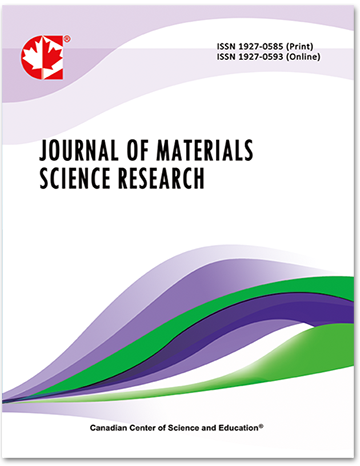Investigation to enhanced Physical and Mechanical Properties of Road Pavement in Asphalt Incorporating Low-Density Waste Plastic Bags
- Etienne MALBILA
- Ertha Z.G. AWANDZA
- Yasmine Binta TRAORE
- Justin KINDA
- Sié KAM
Abstract
The aim of the study is to formulate a new composite material for road pavement by combining asphalt concrete with waste plastic bags (WPB). The study focused on enhancing the physical and mechanical properties of the composite materials by adding varying proportion of WPB. WPB is prepared simply by cleaning and melting them at 300 °C. Then, the melted WPB is mixed with asphalt at 170 °C for 2 to 3 minutes. The resulting mixtures contained different content of WPB by weight such as 0wt%, 5wt%, 10wt%,15wt% and 20wt%. The homogenized mixtures underwent penetration and softening point tests. Additionally, Marshall stability tests were conducted with 0/14 aggregates, along with asphalt concrete (AC) flow tests, Duriez stability reports, and AC compacity tests. The water content of AC was also examined. The results show that as the content of WPB increased, penetration values exhibited a consistent linear decrease. The incorporation of WPB resulted in an average increase of 22.64% in the softening point of asphalt. Increasing the content of WPB led to an average 72.07% rise in Marshall stability, accompanied by a concurrent 29.47% decrease in AC flow. In addition, at 10wt% WPB incorporation, there was an optimal Voids in Mineral Aggregates (VIM) value of 2.07%. The Duriez test revealed an average increase of 15.18% in the stability of asphalt concrete. The compacity of asphalt concrete (AC) experienced an increase, and concurrently, the AC water content also increased. Conclusively, the incorporation of melted WPB effectively improved the physical and mechanical properties of asphalt, showcasing promising prospects for road pavement applications. The study suggests that the polymer-modified asphalt is achieved with WPB loading optimal ranging from 5wt% to 10wt%. This innovative approach holds potential significance, especially in underdeveloped countries where there is an abundant supply of waste plastic bags.
- Full Text:
 PDF
PDF
- DOI:10.5539/jmsr.v13n1p1
Journal Metrics
Impact Factor 2022 (by WJCI): 0.583
Google-based Impact Factor (2021): 0.52
h-index (December 2021): 22
i10-index (December 2021): 74
h5-index (December 2021): N/A
h5-median (December 2021): N/A
Index
- CAS (American Chemical Society)
- CNKI Scholar
- Elektronische Zeitschriftenbibliothek (EZB)
- EuroPub Database
- Excellence in Research for Australia (ERA)
- Google Scholar
- Infotrieve
- JournalTOCs
- LOCKSS
- NewJour
- PKP Open Archives Harvester
- Qualis/CAPES
- SHERPA/RoMEO
- Standard Periodical Directory
- Universe Digital Library
- WJCI Report
- WorldCat
Contact
- John MartinEditorial Assistant
- jmsr@ccsenet.org
